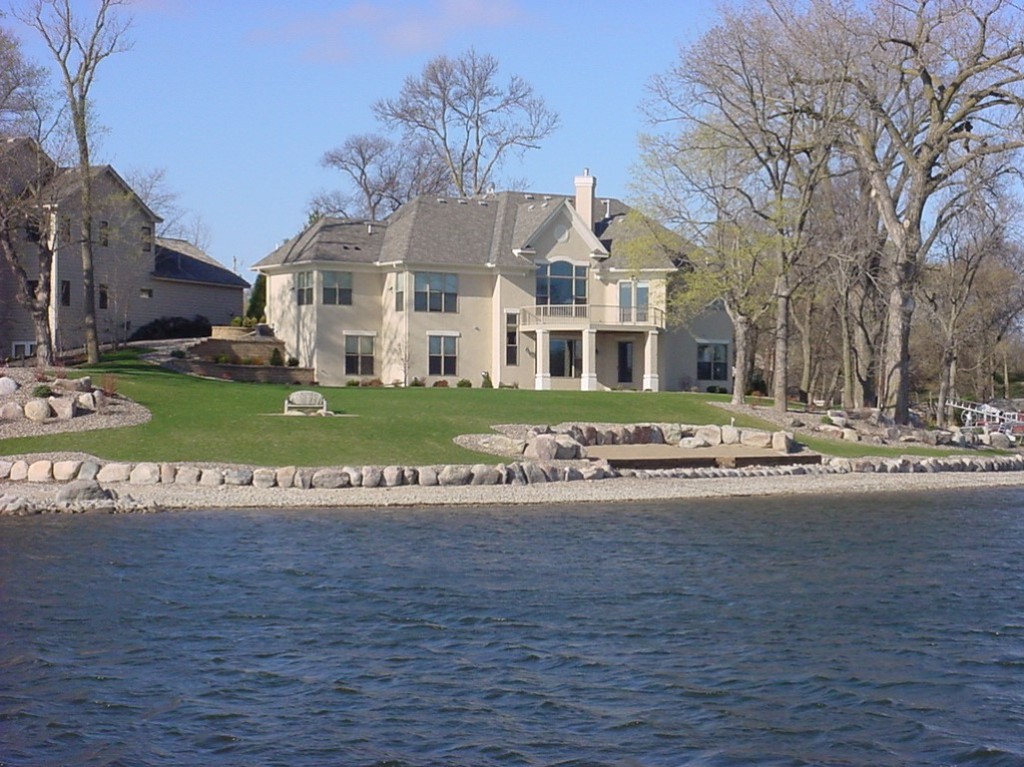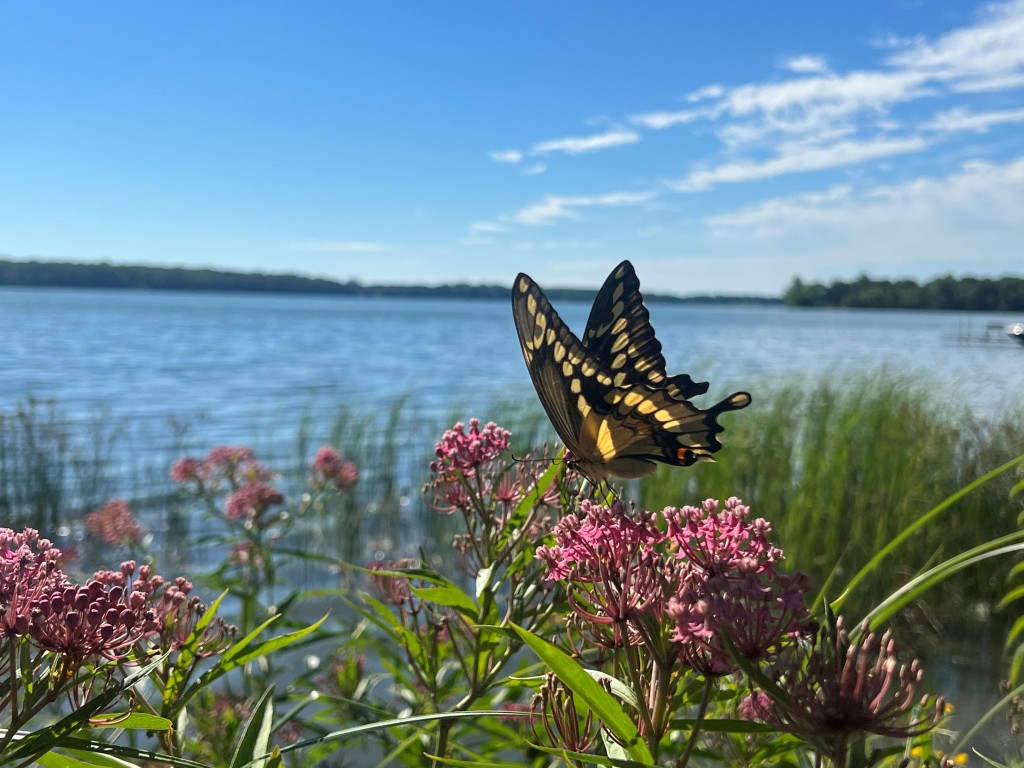Last week, I had the pleasure of crashing a boat ride for local municipal officials. Staff from the Chisago Lakes Lake Improvement District (LID) and the Chisago Soil and Water Conservation District (SWCD) put together a morning cruise of North Center Lake (with many thanks to members of the Center Lakes Association for providing pontoons and drivers!) to showcase the LID’s water monitoring efforts and completed SWCD projects that have helped reduce pollution inputs to the Chisago Chain of Lakes.
It’s a compelling story. Collaboration between the two entities and local community residents has lead to over 200 completed projects since 2011, keeping over 600 lbs of phosphorus (a nutrient that can cause algal blooms) and 400 tons of suspended solids (think sediment) from entering the lakes. SWCD personnel has partnered with area farmers to stabilize gullies and implement responsible tillage practices that minimize erosion and runoff from their fields. More developed areas has seen the creation of raingardens to help manage stormwater runoff, along with encouraging residents to participate in the care of local storm drains (you can adopt your own storm drain at adopt-a-drain.org).
The most noticeable projects for the boat tour participants were the scattered pops of color along the shoreline where several residents have worked with the SWCD and LID to install native plant shoreline buffers. These buffers provide multiple benefits to both the homeowner and the lake, with one of the largest benefits being that buffers help slow and infiltrate stormwater runoff that carries pollutants into the lakes – much more effectively than traditional turf grass. Plus, the long roots of the native plants hold the shoreline in place, preventing shore erosion while also providing habitat for pollinators and other wildlife.
Still, as I sat there in the boat, the number of properties with shoreline buffers were greatly outnumbered by those with no buffers, riprapped shores, extensive gravel beaches, or lawn down to the shore. It made me think of a recent paper that was published by the Minnesota Natural Shoreline Partnership that speaks to Minnesota’s “Vanishing Shorelines.” In effect, how we live along our shorelines has a direct impact to the health and vitality of the lake and its ecosystems. While individual shoreline property owners may not think their actions can influence water quality and aquatic life, the cumulative impact of a majority of neighbors developing these shorelines and removing vegetation and/or rocking the shore has an extensive impact.

Case in point: the amazing work and efforts by the LID, SWCD and their community partners and residents helped get North and South Center Lake off the Minnesota Impaired Waters List for phosphorus in 2022. However, 2022 is also when North and South Center Lake, as well as North and South Lindstrom, Little Green and Green Lakes, and Kroon Lake were all listed as impaired for aquatic life.
The impairment is assessed using biological monitoring to assess the health of the aquatic environment by monitoring fish, macroinvertebrates, and plant communities. Fish bioassessments in these lakes indicated poor biological conditions exist on these lakes, likely due to poor habitat quality. One example of that: where do fish get their food? Generally those food sources live in shallower water closer to the shorelines. And if there is no habitat along the shoreline to sustain those food sources, you aren’t going to be able to support desirable fish populations. It’s all connected.
It is going to take time to change the perception that a more urbanized, structured lakeshore with extensive lawns is the ‘proper’ look for property owners. We need more shoreline owners willing to ‘leave a little for the lake’ by installing shoreline buffers along a portion of their property. The goal stated in the white paper is to have 75% of a shoreline be unmowed, with natural vegetation at least 25 feet in width landward.

Many shoreline owners are starting to get on board and many conservation staff believe that even a start will make shoreline owners want to do more. That is most definitely the case for Tara and Shravan Iyer who live along Green Lake in Chisago County. Back in 2020, they worked with the Chisago SWCD and LID in 2020 to install a shoreline buffer after they became frustrated with the upkeep of the riprap shoreline they currently had. While initially skeptical of the process and the amount of work needed to weed and baby along their new native buffer, they now thoroughly enjoy the results of the process and are interested in doing more. When I visited their lakeshore last year, their buffer was colorful and full of butterflies, birds, and bees. What was noticeably absent? Canadian geese and their poop. WIN.

What’s more, last year one of their neighbors decided get in on the action and installed a buffer on their shoreline. A little social intrigue and acceptance goes a long way!
We are working with the Iyers, LID, and SWCD to host a ‘Shoreline Showcase’ next Tuesday, August 15th from 6-8 pm where folks are able to come visit the Iyer’s Green Lake shoreline and ask questions about the process, the bumps and bruises, and the successes they’ve enjoyed. We’d love to see folks there – we will have some pizza and drinks available! If you could RSVP at tinyurl.com/shorelineshowcase, that helps with our planning!
